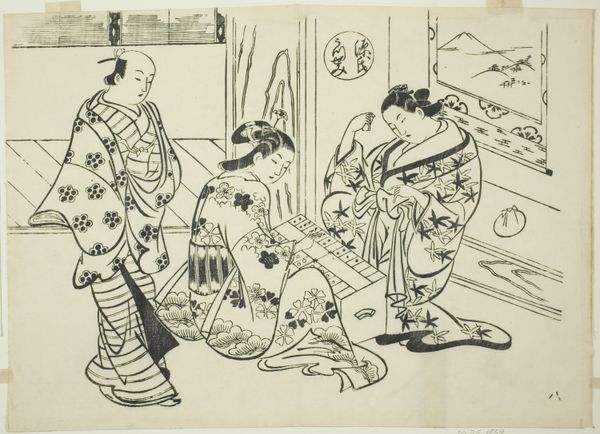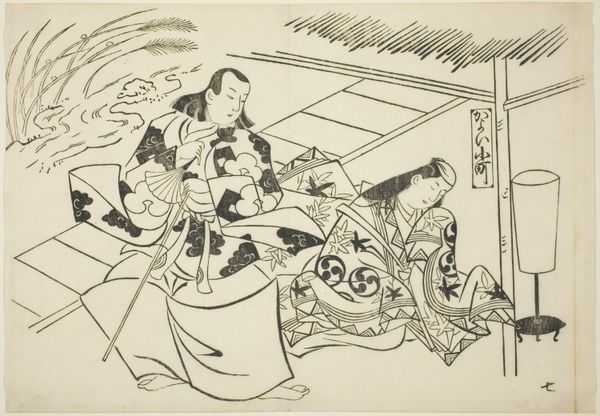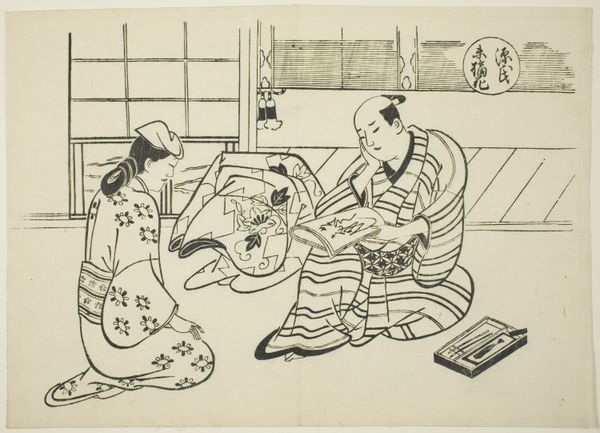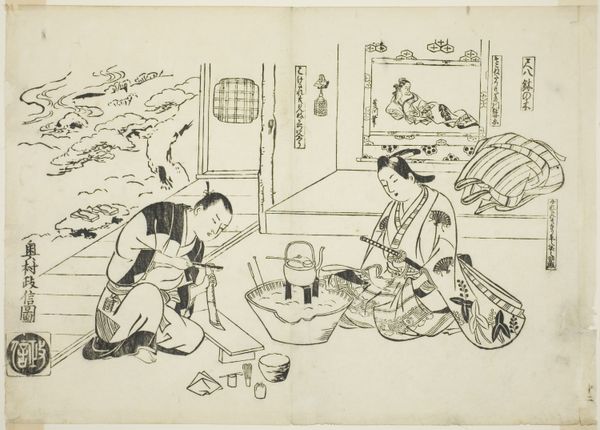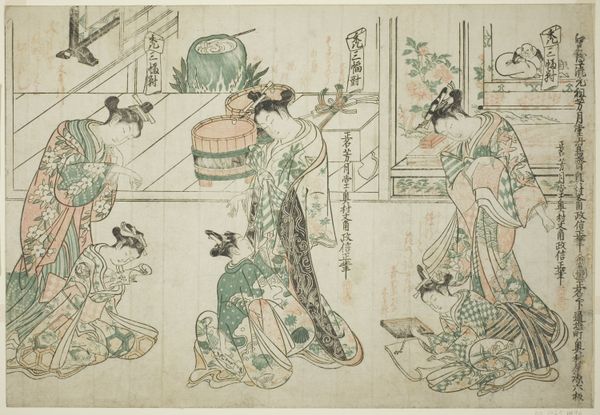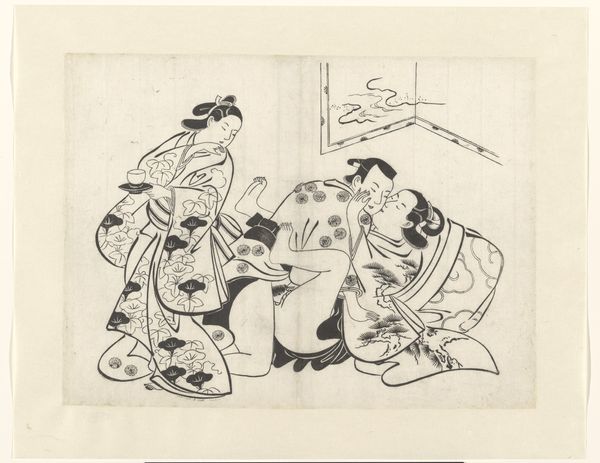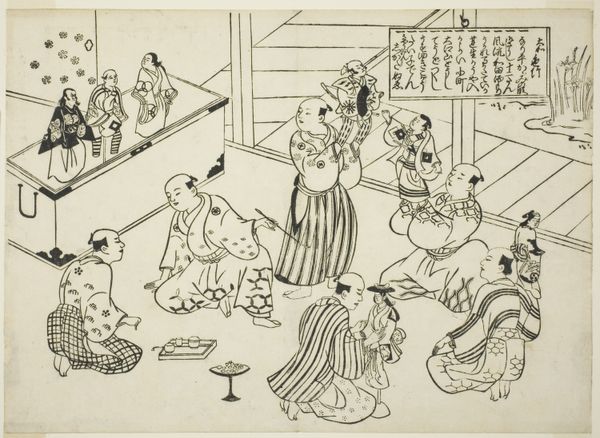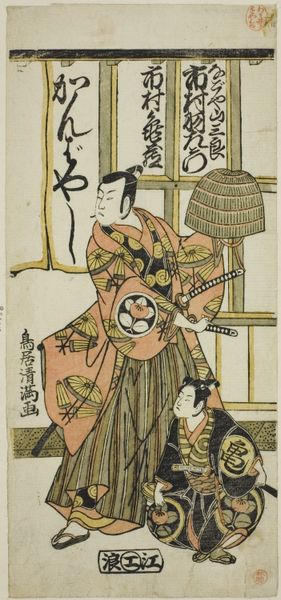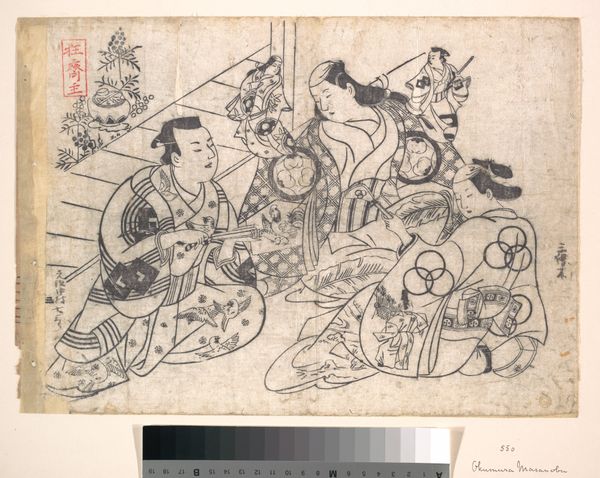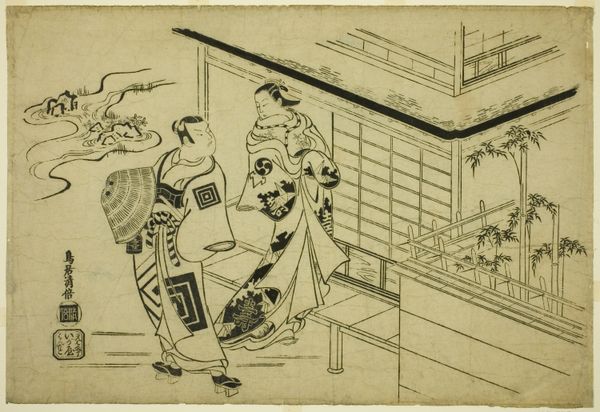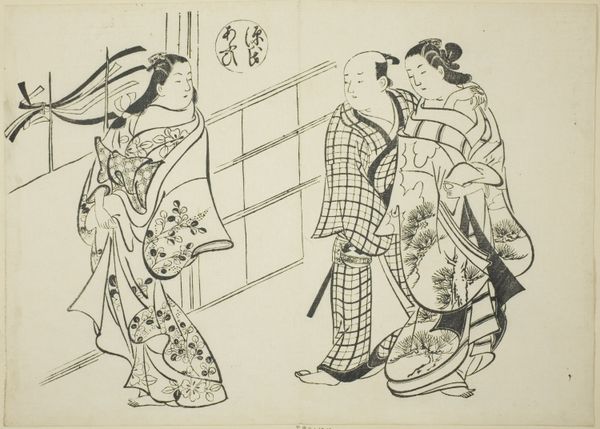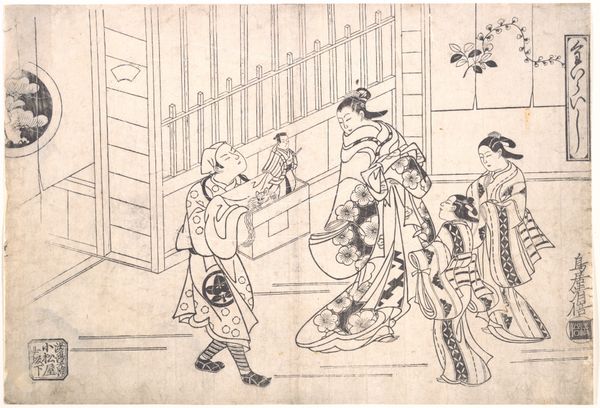
Sanbaso Dance in a Brothel (Ageya sanbaso), no. 1 from a series of 12 prints depicting parodies of plays c. 1716s - 1726s
0:00
0:00
#
ink drawing
#
pen drawing
# print
#
pen illustration
#
pen sketch
#
asian-art
#
japan
#
personal sketchbook
#
ink drawing experimentation
#
pen-ink sketch
#
pen work
#
sketchbook drawing
#
sketchbook art
Dimensions: 27.1 × 37.1 cm
Copyright: Public Domain
Editor: Here we have "Sanbaso Dance in a Brothel," a print by Okumura Masanobu, dating from the late 1710s or early 1720s. The monochromatic style, the focus on the figures, and the tile floor – it gives it a theatrical feel, almost like a stage. What’s your interpretation of the figures in the scene, and the way they’re positioned? Curator: It feels as though we are peering into a dream, doesn’t it? I wonder if Masanobu chuckled to himself while drawing this. See how he elevates something sacred like the Sanbaso dance – traditionally performed to pray for good harvests – and plops it down in a pleasure house! Perhaps this is a sideways glance at the rigid expectations of Edo society, wrapped in layers of wit. Do you notice the subtle details, like the faces? Editor: They're pretty expressive, especially the woman in the center with the fan. Curator: Indeed. Masanobu isn't just copying reality; he's giving us the mood of it. And the "mistakes"—are they errors or winks? Art, at its finest, isn’t about answers, but better questions. Makes you wonder if art like this could spark rebellion in an uptight society, right? Editor: I never really considered the potential subversive element of art like this before, especially back then. It's made me look at it a different way now. Curator: That's the wonderful thing about art; a fresh angle can turn the familiar into something unexpected. Remember this playful print next time someone tells you history is boring! Editor: Definitely something to ponder. Thanks for illuminating this piece!
Comments
No comments
Be the first to comment and join the conversation on the ultimate creative platform.
